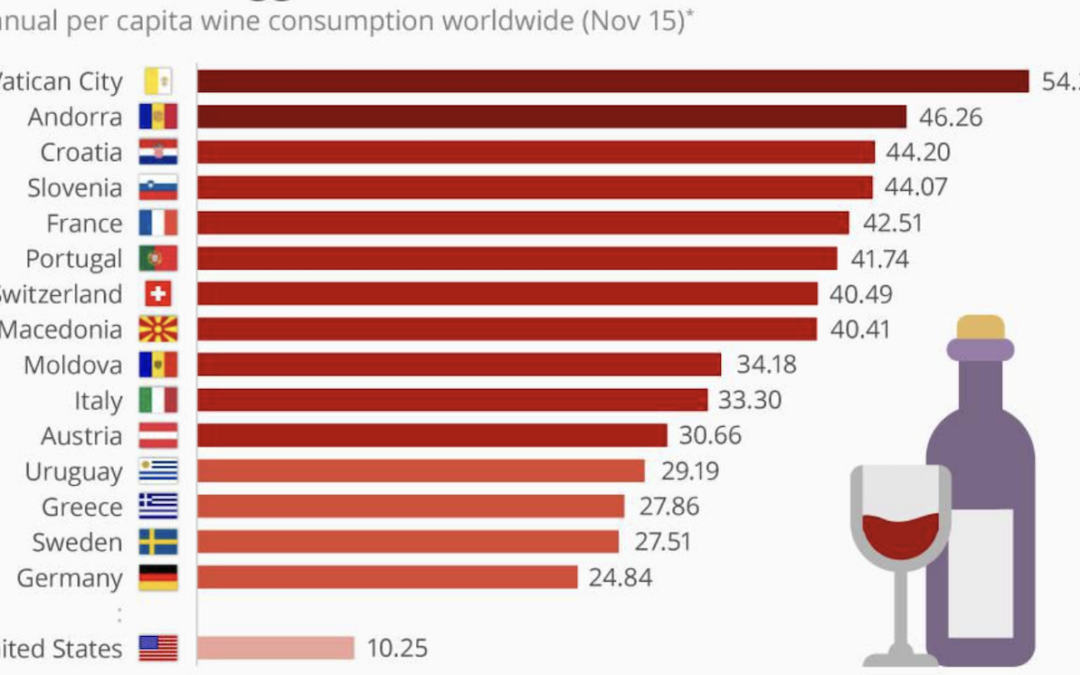Vatican City, the world’s smallest independent state, is outsized in the global wine landscape. Despite its modest population of around 800 residents, the Vatican consistently ranks as the top wine importer per capita. Its consumption figures reach approximately 79 liters per person annually, equivalent to about 99 bottles each.
Why Does the Vatican Consume So Much Wine?
Several factors contribute to the Vatican’s remarkable wine consumption:
• Liturgical Necessity: Wine plays a central role in Catholic rituals, particularly the Eucharist. The Code of Canon Law mandates that sacramental wine be made solely from grapes and free of impurities, necessitating a steady supply for the numerous religious services conducted daily.
• Demographics: The Vatican’s population is predominantly adult, with few, if any, children. This demographic structure naturally elevates per capita consumption statistics compared to countries with more diverse age distributions
• Hospitality and Events: The Vatican hosts many events, conferences, and diplomatic gatherings, all of which often feature wine as a symbol of hospitality and tradition.
• Duty-Free Privileges: Under the 1929 Lateran Treaty, the Vatican enjoys duty-free importation of goods, including wine, hence no tariffs. This status allows for procuring high-quality wines at lower costs, further facilitating consumption.
Navigating the Vatican’s Unique Wine Market
The Vatican’s wine procurement process is distinct and somewhat opaque:
• Importation Process: While the Vatican is not part of the European Union, it imports nearly all its wine from Italy. Exporters must apply through a public notice portal called Bandi Pubblici Santa Sede, distinguishing between general beverages and those intended for Holy Mass.
• Selective Partnerships: Personal relationships often play a crucial role in securing contracts to supply wine to the Vatican. Producers with longstanding ties or religious affiliations may have an advantage, but quality and persistence are also key factors.
• Retail Outlets: Within Vatican City, wine is available at two primary locations: the Annona store, currently under renovation, and a shop located in an old railway station, accessible only to members such as Vatican staff and accredited diplomats.
Embracing Tradition and Innovation
In recent years, the Vatican has taken steps to integrate wine production within its own territories:
• Castel Gandolfo Vineyard: The papal summer residence at Castel Gandolfo has initiated a project to cultivate a Cabernet Sauvignon-based red wine, with the first vintage expected in 2026. This endeavor reflects a blend of tradition and modern viticulture.
• Borgo Laudato Si’ Project: Another initiative at Castel Gandolfo focuses on researching disease-resistant grape varieties, aligning with environmental stewardship and sustainable practices.
Cultural Significance
The Vatican’s relationship with wine is deeply rooted in its religious practices, cultural traditions, and unique geopolitical status. Its high per capita consumption reflects not only the ceremonial use of wine but also its role in diplomacy, hospitality, and community life within the Holy See.

